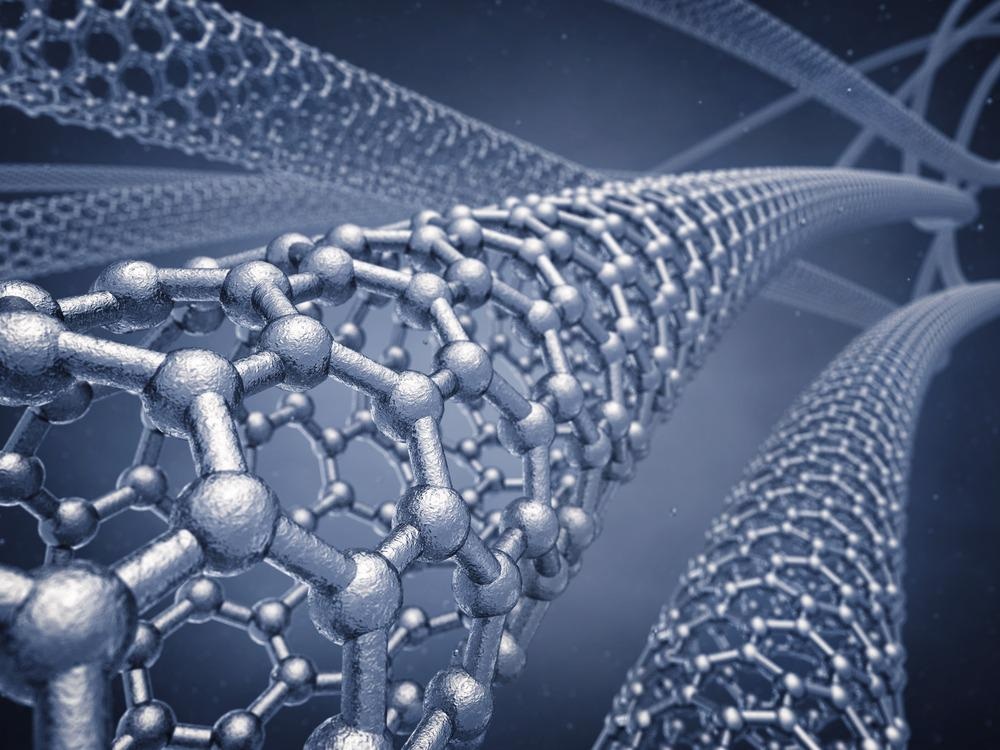Nitrogen enriched carbon quantum dot (CQD)-integrated carbon nitride (CN) nanotubes (CCNTs) were created using cryodesiccated urea and CQD substrates in a study published in Materials Today Chemistry.

Study: Carbon quantum dots-embedded graphitic carbon nitride nanotubes for enhancing the power conversion efficiency of sensitized solar cells. Image Credit: nobeastsofierce/Shutterstock.com
Here, the team recorded that the produced CCNTs were employed as effective optical harvesters in QDSCs; their employment greatly enhanced the power conversion efficiency (PCE) of the photovoltaic cells in comparison with CN NT, CQD and bulk CN-sensitized photovoltaic cells.
Status of Current Research on Quantum Dots
As quantum dots (QDs) have better features than metallo-organic pigments, such as energy band gap controllability, mixture processability, high innate dipole moment, and large attenuation coefficients, they are a prospective option for photon absorption applications.
Although the PCEs of quantum dot sensitized solar cells (QDSCs) are lower than those of dye-sensitized photovoltaic cells, QDSCs have piqued the attention of scientists as possible inexpensive third-generation photovoltaic cell (PVC) contenders. As such, the sector is progressing at a rapid pace.
At the moment, QDSC research is mostly centered around dangerous chalcogenides (cadmium and lead); industrial use is unfeasible due to the associated ecological and health concerns.
Furthermore, "green" solutions based on lead and cadmium free electronics have been developed. The manufacturing of these synthetic semiconducting QDs with regulated shapes and sizes is a difficult procedure.
As these quantum dots are corrosive in the I-/I3- electrolyte and impact stability, scientists should develop eco-friendly substitutes to traditional lead or cadmium chalcogenide-based QDs; these substitutes must show great optoelectronic characteristics for the production of green photovoltaic equipment.
Alternatives to Chalcogenide-based QDs
Carbonaceous nanoparticles such as graphene QDs, carbon nanodots (CNDs), and carbon quantum dots (CQDs) have been considered as low-cost, biocompatible, and non-poisonous replacements to the hazardous compounds described above.
These carbonaceous materials are extensively utilized in LEDs, photocatalysts, and PVCs due to their reduced toxicity, outstanding optical characteristics, cheap cost, ease of manufacture, and chemical inertness.
CQDs are also commonly utilized in synthetic QD-based photovoltaic cells as sensitizers or co-sensitizers.
The reduced PCE of CQD-sensitized solar cells (CSSCs) could be attributed to the small short-circuit current; this may be as a result of a bigger gap in between the conduction bands (CBs) of TiO2 and CQDs.
Furthermore, CQDs have a shorter absorption spectrum in visible light than in UV light, which may account for the lower PCE.
Heteroatomic (sulfur and nitrogen) doping is a prominent method for narrowing the band gap among TiO2 CBs and CQDs by producing sub-electron regions within the band gap.
Much work has gone into creating N-doped CQDs as clean sensitizers for CQD-sensitized photovoltaic cells. Nonetheless, the PCE of CQD-sensitized photovoltaic cells has to be enhanced further.
Advantages of Using Carbon Nitrides
The utilization of nanoscale carbon nitrides (CNs) as metal-free semiconductors has sparked much interest.
For oxygen reduction and chemical synthesis, CN is frequently utilized for photocatalysis, as well as an electrocatalyst and heterogeneous catalyst.
CN has a cheap cost and a large specific area; it also allows for structure adjustments via surface modeling. However, only a few studies have used CN in photovoltaics.
CN has shown to be an effective, inexpensive sustainable source of energy with considerable versatility in this industry. Scientists used bulk carbon nitride or CNQDs as recipients in mesostructured photovoltaic cells and found that the PCEs of the photovoltaic devices were enhanced.
Key Findings of the Study
In this work, "green" QDSCs built on CCNTs (CQD-integrated CN NTs) were constructed to develop light harvesting substances with an overall PCE of 1.01 percent; this figure is the largest across all carbon-based QDSCs.
The cylindrical microscale heterostructure of the CCNTs is responsible for the photovoltaic device's outstanding performance.
The CCNTs' well-conceived structure promotes charge segregation. Furthermore, the incorporation of nitrogen-enriched CQDs in CCNTs modifies the band configuration and enhances visible light harvesting by lowering the energy threshold, which enhances the device's charge collecting performance simultaneously.
The CCNTs-sensitized device outperformed the CQD, CNNT, and bulk CN-sensitized devices in terms of photostability.
Overall, the intelligent coupling of CQDs and CN may be utilized to create effective light harvesters that can increase the PV efficiency of solar cells.
Reference
Riaz, S., & Park, S.-J. (2022). Carbon quantum dots-embedded graphitic carbon nitride nanotubes for enhancing the power conversion efficiency of sensitized solar cells. Materials Today Chemistry, 24. Available at: https://www.sciencedirect.com/science/article/pii/S2468519421003438?via%3Dihub
Disclaimer: The views expressed here are those of the author expressed in their private capacity and do not necessarily represent the views of AZoM.com Limited T/A AZoNetwork the owner and operator of this website. This disclaimer forms part of the Terms and conditions of use of this website.